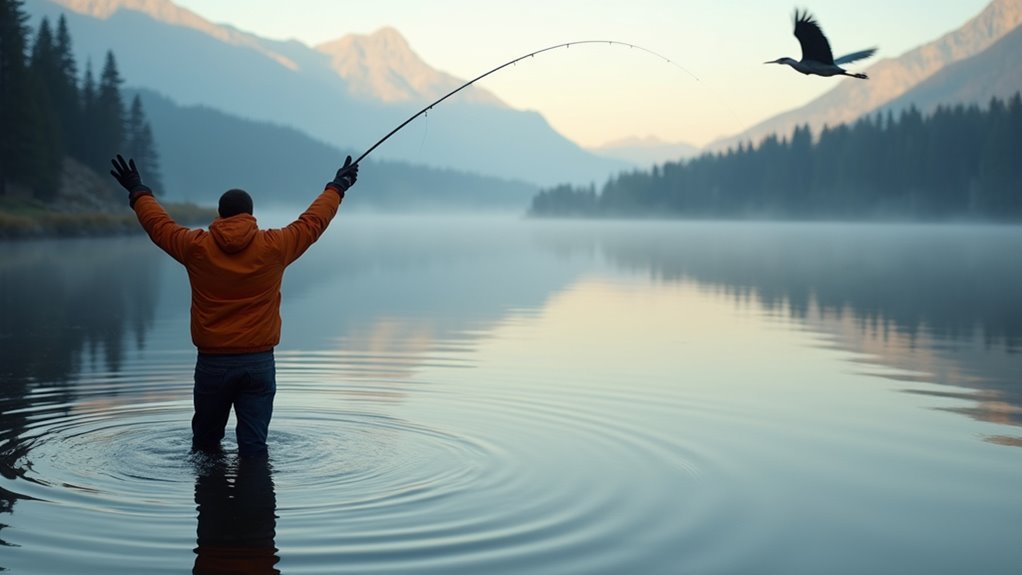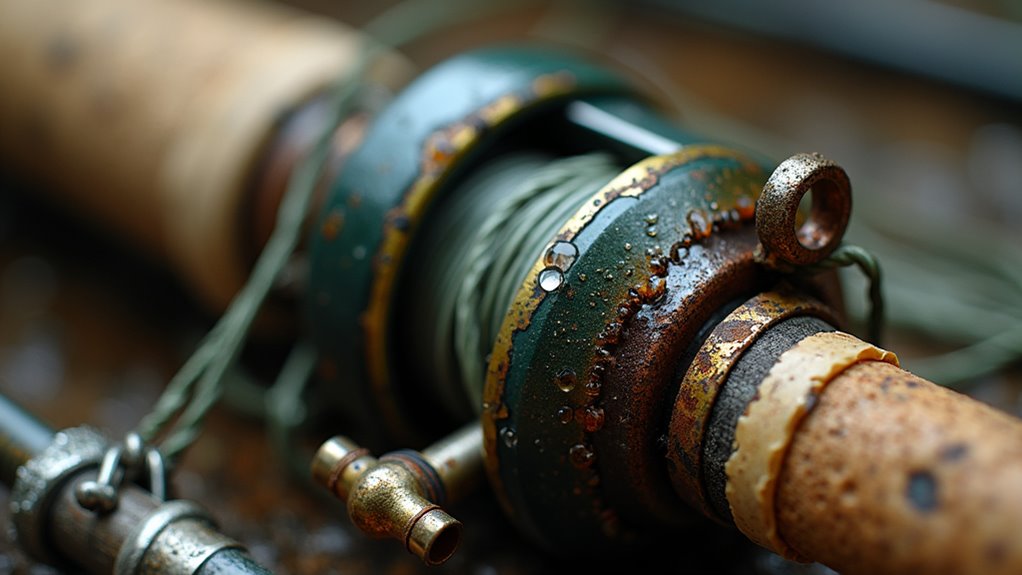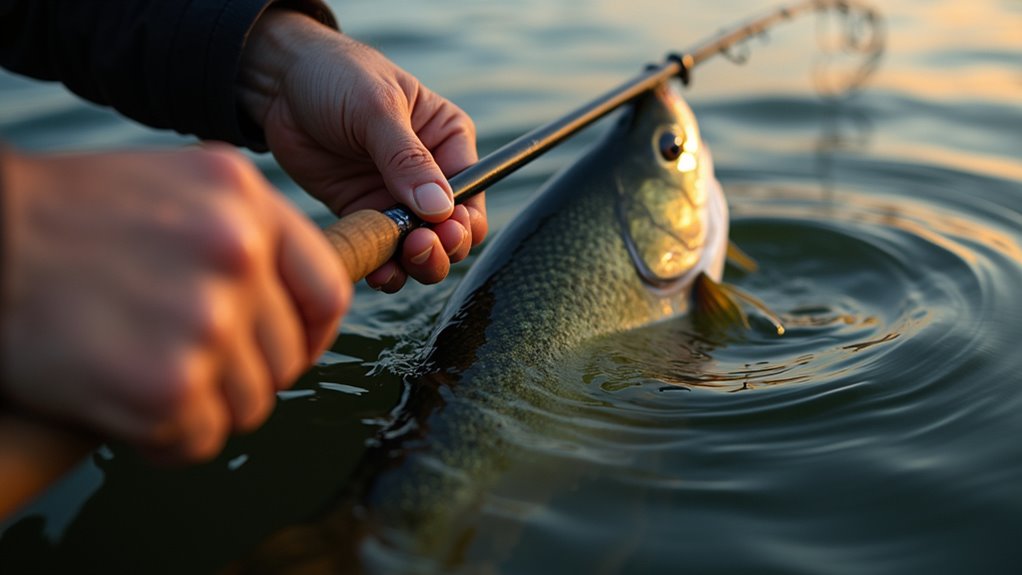Physical Address
304 North Cardinal St.
Dorchester Center, MA 02124
Physical Address
304 North Cardinal St.
Dorchester Center, MA 02124

Don't let these five common fishing blunders ruin your next trip and send every fish swimming away from your hook.
You’ve probably experienced that sinking feeling when fish after fish escapes your line, leaving you wondering what went wrong. While fishing seems straightforward, there’s a surprising number of ways to sabotage your own success without even realizing it. Most anglers make the same fundamental errors repeatedly, turning what should be productive outings into exercises in frustration. The good news? These mistakes are entirely preventable once you know what to watch for.

While many anglers focus on perfecting their casting technique or finding the ideal fishing spot, they’ll often overlook one of the most critical factors that determines success: matching your bait to the fish you’re targeting.
You can’t expect to catch bass using corn or trout with chicken liver. Each species has evolved with specific feeding preferences and behaviors.
Bass are aggressive predators that’ll strike at minnows, worms, and flashy lures, while catfish prefer stinky baits like cheese or cut bait.
Research your target species before heading out. Local bait shops are goldmines of information—they’ll tell you what’s working in your area.
Don’t waste hours with the wrong presentation when five minutes of preparation could’ve saved your entire fishing trip.
For instance, successful salmon fishing requires understanding their specific dietary preferences and seasonal feeding patterns to select the most effective lures and baits.
Even if you’ve got the perfect bait and prime fishing spot, you’ll struggle to catch anything when you ignore what Mother Nature’s telling you. Weather and water conditions dramatically affect fish behavior, yet many anglers overlook these vital factors.
Here’s what you need to monitor:
Don’t just check the forecast once. Conditions change throughout the day, and successful anglers adapt accordingly.
Use a fishing app or portable weather station to stay informed and adjust your tactics when Mother Nature shifts gears.
If you’re fishing from a canoe, mastering proper paddling techniques becomes even more crucial when conditions suddenly change and you need to reposition quickly or return to shore safely.

Beyond reading nature’s signals, you’ll also need to master the art of stealth on the water. Fish possess incredibly sensitive lateral line systems that detect vibrations and pressure changes from considerable distances. Every heavy footstep on the dock, dropped tackle box, or animated conversation sends warning signals straight to your target’s nervous system.
Move deliberately and quietly along the shoreline. Keep conversations to whispers and avoid sudden movements that create shadows over the water. Many cultures, particularly Japanese tenkara fishing traditions, emphasize this meditative approach as essential to success.
Your gear matters too—avoid shiny objects that flash in sunlight and opt for earth-toned clothing. Remember, you’re entering their world as a guest. The quieter and more respectful you are, the better your chances of earning their trust. Just as outdoor enthusiasts need to minimize disturbance while fishing, campers should also be prepared for the inevitable bug bites that come with spending quiet time in nature’s domain.
Though you might assume fish bite consistently throughout the day, timing your fishing trips can make the difference between a successful outing and going home empty-handed. Fish feeding patterns follow natural rhythms that smart anglers respect.
Most species are crepuscular, meaning they’re most active during dawn and dusk when light levels change. During these periods, insects emerge and smaller fish venture into shallow waters, triggering feeding frenzies.
Consider these ideal fishing windows:
Midday fishing often proves frustrating as fish retreat to deeper, cooler waters. Just like planning the perfect timing for your fishing expedition, successful camping adventures require careful preparation and attention to detail.

While many anglers obsess over finding the perfect fishing spot, they’ll often neglect the very equipment that connects them to their catch. Your fishing line is your lifeline to success, yet it’s frequently the weakest link in your setup.
Check your line regularly for nicks, abrasions, or memory coils that signal replacement time. Old monofilament becomes brittle and loses strength, while braided lines can fray at connection points.
Don’t forget your reels—sticky drag systems and corroded bearings will cost you fish when it matters most.
Sharp hooks are non-negotiable. A dull hook won’t penetrate properly, leading to missed strikes and lost fish. Carry a small file or sharpening stone, and replace rusty hooks immediately.
Your tackle box organization matters too—tangled lines and corroded lures waste precious fishing time. When fishing near water, don’t forget to pack mosquito repellent since these pests are drawn to the moisture and can quickly ruin an otherwise perfect day on the water.
Having pristine equipment won’t help if you’re casting into barren water. Location selection separates successful anglers from frustrated ones returning empty-handed.
Fish aren’t randomly distributed—they congregate where conditions meet their needs. You’ll waste hours casting into dead zones while overlooking productive spots nearby.
Fish follow food and shelter, not wishful thinking—cast where conditions converge, not where water looks pretty.
Target these high-probability areas:
Study your fishing spot beforehand. Use fish finders, talk to locals, and observe water conditions.
Smart positioning beats perfect technique every time. Consider planning an extended fishing trip with an RV rental to access remote fishing locations and stay close to your favorite spots.

Even experienced anglers struggle with hook-setting timing, turning promising bites into missed opportunities. You’ll feel that telltale tug and either jerk immediately or hesitate too long—both kill your chances.
Setting too early means you’re yanking the bait from the fish’s mouth before it’s properly taken. You’ll frustrate yourself watching fish after fish escape.
Wait too long, and the fish realizes something’s wrong, spitting out your offering before you react.
The sweet spot depends on your target species. Bass require quick, firm hook-sets since they’ll quickly realize artificial lures aren’t food.
Catfish need patience—they’ll mouth bait longer, so count to three before setting. Trout fall somewhere between.
Practice makes perfect. Pay attention to each species’ feeding behavior and adjust accordingly.
Just like choosing the right all mountain snowboards requires understanding versatility for different conditions, mastering hook-setting timing demands adapting your technique to various fishing scenarios.
You’ve got the knowledge—now you’ve got the power to transform your fishing game. Don’t let wrong bait choices sink your success, don’t ignore nature’s signals, and don’t rush the perfect moment. Remember, fishing isn’t just about catching fish; it’s about connecting with tradition, respecting the water, and finding your rhythm. Stay patient, stay prepared, and stay quiet. Your next cast could be the one that changes everything.